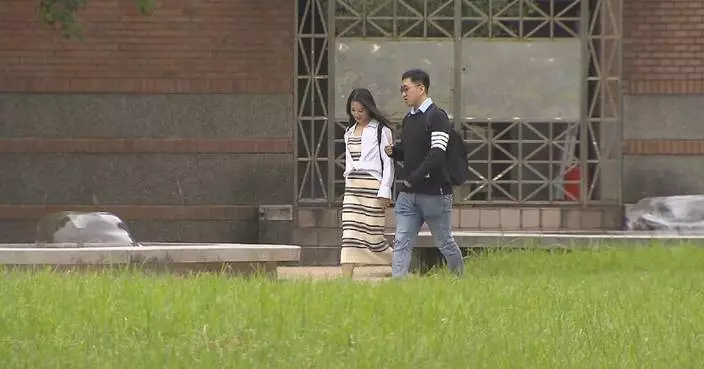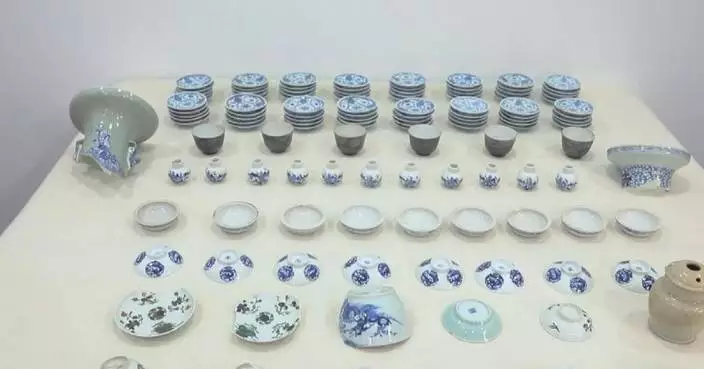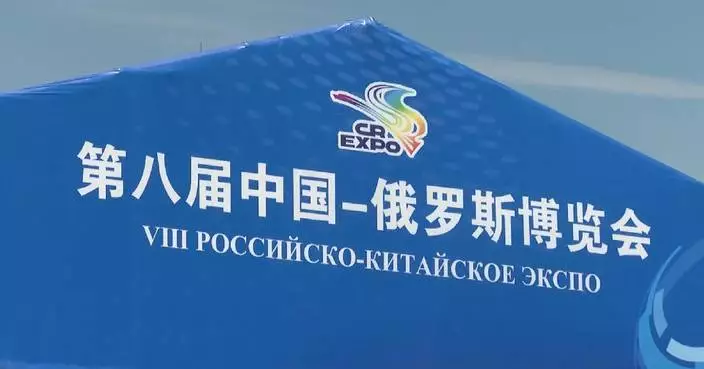As this year marks the 75th anniversary of the establishment of diplomatic ties between China and Hungary, a Hungarian-Chinese bilingual school in Budapest which Chinese President Xi Jinping visited 15 years ago has remained a key bridge between the two nations, helping to foster cross-cultural understanding through language education.
Founded in September 2004, the Hungarian-Chinese bilingual school is the only full-time school in Central and Eastern Europe that uses Chinese and the local language for instruction. Currently, the school has 12 grades and 20 classes with more than 530 students.
During his visit to Hungary in October 2009, Xi, who was then China's vice president, visited the school, leaving a lasting impression on Zsuzsanna Erdelyi, the headmistress.
"When I met the President in person, I felt that he was a very strong and charismatic leader. We shook hands and he gave me the impression of a very kind and straightforward person," said Erdelyi.
Erdelyi emphasized that this state-run educational institution stands out in Europe, offering students a unique opportunity to immerse themselves in traditional Chinese culture through activities such as calligraphy and tea ceremonies, in addition to intensive language learning.
"The Hungarian bilingual primary and secondary school has played an important role in the relations between the two countries, especially in culture. Chinese is not only taught and learned in the school but the culture is also being introduced to the students. The Chinese students are getting to know the Hungarian culture as well, so I think that the two cultures and their friendship are very well represented and strengthened by this school," said the headmistress.
During his visit, Xi shared an insightful message with the school, according to Erdelyi.
"President Xi visited Hungary in 2009 indeed. Visiting the school was on his agenda at that time. It was a long time ago, and he told us something very important that teaching and educating children is like planting a tree. We are constantly taking care of it, helping it to grow up to a huge tree. Just like the students, they become mature, properly thinking adults," she said.

Xi's 2009 visit to Hungarian-Chinese bilingual school fosters deeper cultural ties
Chinese scientists have recently worked together and rebuilt the face of an ancient Chinese ethnic minority emperor via cutting-edge DNA technology.
Emperor Wu of the Xianbei-led Northern Zhou Dynasty (557-581), also known as Yuwen Yong, was an ambitious leader who died at 36. He belonged to the Xianbei nomadic group, which originated from the Mongolian Plateau.
The tomb of the emperor was discovered in 1993 in a village of the city of Xianyang in northwest China's Shaanxi Province. His skull and bones were discovered during an excavation held in 1994 and 1995 at the site of his tomb.
In late March this year, scientists led by the Shaanxi Provincial Institute of Archaeology and the Institute of Archaeological Science of Fudan University managed to decode key features of the emperor and speculate about his cause of death. The emperor might have died from chronic arsenic poisoning due to long-term use of a pellet, which was believed by ancient people to achieve eternal life.
"First, the skeleton can be used to determine age. Second, in terms of age and gender, some pathological research can also be done to see if he had any fractures or other (diseases)," said Zhang Jianlin, a researcher from the Shaanxi Provincial Institute of Archaeology.
Obtaining high-quality genomic data is crucial for restoring the face. Through DNA paleogenomics techniques and optimized DNA extraction, database building and capture methods, more history was revealed.
"First, we have done the shorter fragments enrichment method, which is a DNA extraction method. In addition, we have developed some more sensitive database building method suitable for ancient samples with short fragments. You can regard it as a method to amplify the genetic signal, the extracted DNA. The third is that we have developed a capture method that is more suitable for this kind of highly degraded ancient samples. So we have optimized and improved our approach from three aspects at the same time," said Wen Shaoqing, an associate professor of the Institute of Archaeological Science of Fudan University.
The reconstructed face showed that Yuwen Yong had black hair, yellow skin and brown eyes, while his appearance was typical for people from East or Northeast Asia.
Wen said that with the help of the DNA technology, the accuracy of facial restoration can reach 90 percent.
"As for the accuracy of (facial restoration), the current situation is that if there is a skull as a basis, its accuracy will be relatively high," said Wen.

Scientists rebuild face of ancient emperor using advanced DNA technology










